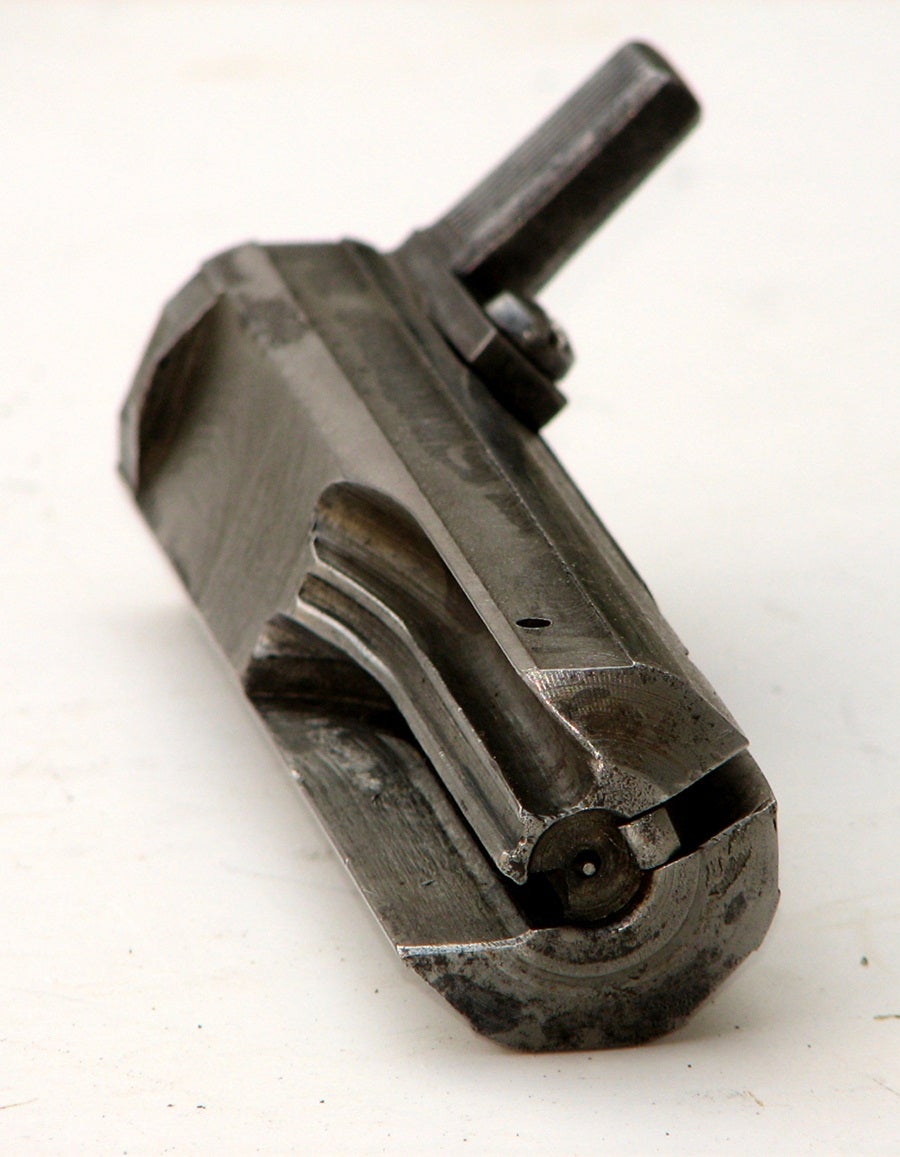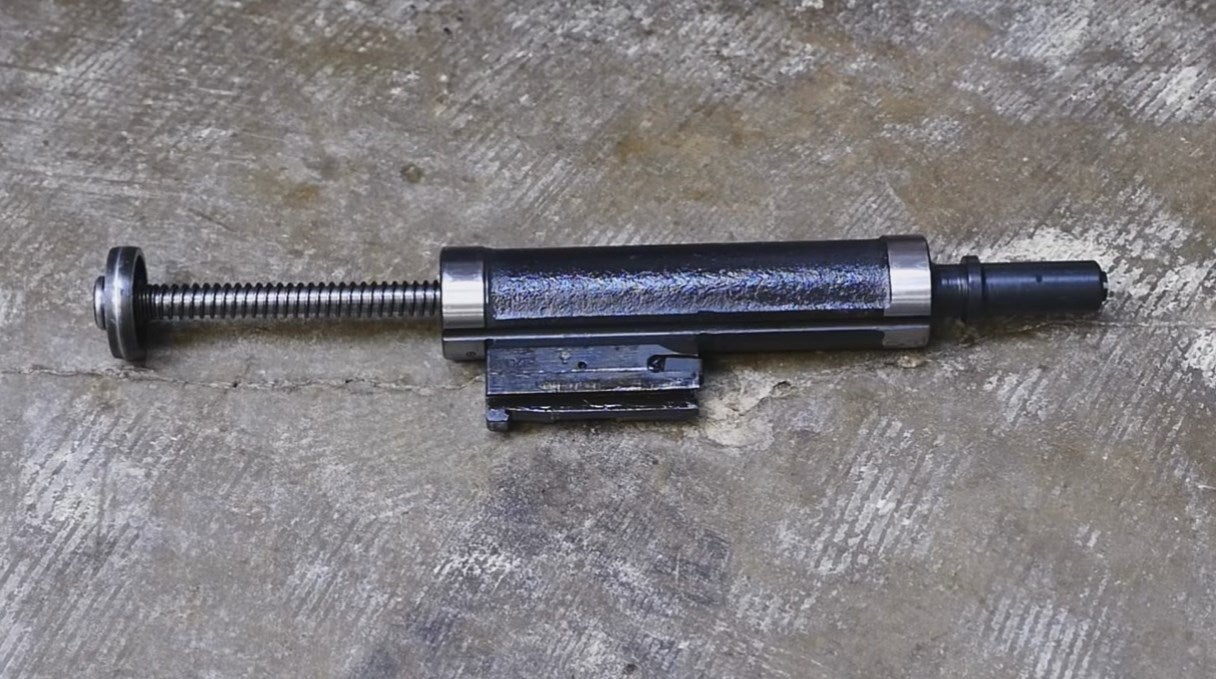Previously in TFB’s series on weapon operating mechanisms, we examined both the closed-bolt blowback system and the open-bolt API blowback system, two very close relatives that share a common feature: Closure of the breech through the inertia of the breechblock mass alone. What this means for small arms designers is that they must engineer a system where the breechblock is large enough to have sufficient mass, while having enough room to reciprocate the distance necessary for reliable ejection and feeding. In a standard submachine gun design using the API blowback system, for example, the breechblock is configured behind the breech end of the barrel, so that it can reciprocate. This is an easy design to engineer, and can be made simply and easily.

You can see the form of a conventional submachine gun breechblock in this bolt from a Blyskawica SMG, made covertly in shops in Poland during the Second World War, as part of the Polish fight against the Nazis. The round recess closest to the camera is the breech face, and virtually all of the bolt’s mass is located behind it. Image courtesy of Leszek Erenfeicht
However, beginning in the 1940s, there emerged a demand for submachine guns to be made smaller and more compact, to allow their use by echelon troops, police, and special forces. This pressure spurred the invention of what’s called the “telescoped” or “telescoping” bolt configuration, which differs from the traditional layout in having a large portion of its mass in front of the breech, rather than behind it. This allows the bolt’s mass to be stored above the barrel, greatly reducing the length of the receiver and making for a much more compact weapon, while still allowing for economical manufacture and the use of unlocked blowback operation (either pure or API).

This Walther MPL bolt exploits the telescoping principle. You can see the breechface as the rightmost edge of the rectangular section below round main body. Much of the bolt’s mass is laid out forward and above the breechface.
Weapons using telescoped bolts enjoy a huge benefit in compactness versus their conventional counterparts, but the older, simpler style still lives on, especially in improvised and covertly made weapons that can be found all over the world.
 Your Privacy Choices
Your Privacy Choices
